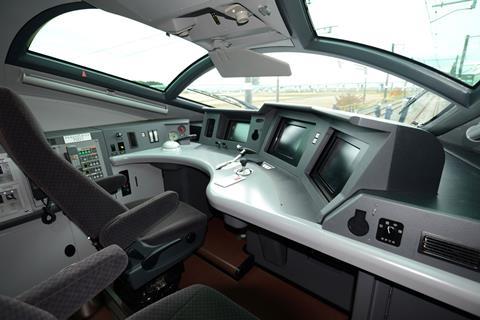
JAPAN: East Japan Railway demonstrated autonomous operation of a Series E7 high speed trainset to invited guests on November 17. Although a driver was present, his instructions were to keep his hands off the controls unless anything unexpected happened.
The train traversed a 5 km section of non-revenue tracks in Niigata, linking the main station with the local high speed train maintenance centre. It reached a maximum speed of 100 km/h, stopping at the required position with its doors aligned with the markings on the platform.

The focus of the automation testing which began in October has so far been on acceleration, deceleration and the ability to stop at a precise location, which is essential since many Shinkansen station platforms now have half-height gates; JR East defines a precise stopping position as being within 500 mm of the marks on the platform.
The trials are also assessing the quality of live CCTV transmission between the moving train and the control centre.
JR East is aiming to achieve autonomous operation at up to 200 km/h in the near future, with the aim of reducing human error in operations and enabling greater flexibility for drivers’ work schedules and rostering. The rail sector is facing a shortage of operating staff, including drivers, a trend that is exacerbated by the wider demographic challenges facing the whole country as its population ages.
Yasuaki Suzuki from JR East’s next-generation transport system promotion centre said there is still much fine-tuning of the ATO to be completed to ensure smooth, imperceptible stops at stations.
The E7’s automatic train control system can initiate braking automatically, but it is still regarded as lacking the finesse of a driver’s manual touch. Nevertheless, JR East reported that acceleration and deceleration during the test runs were both very smooth.
Another challenge to be addressed is the considerable distance between stations on the Shinkansen network. If driverless operation were to be permitted in revenue operation, issues such as emergency evacuation during earthquakes would have to be addressed.
However, ATO is likely to prove much easier to introduce on the high speed network than on many conventional routes, where the numerous level crossings would pose a significant technical challenge and source of possible risk.

















